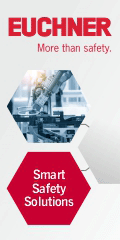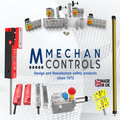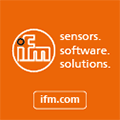
Posted to News on 7th Nov 2006, 22:14
Direct metal laser sintering of production-quality parts
Direct Metal Laser-Sintering (DMLS) has now advanced to become a key technology for e-Manufacturing: fast and cost-effective direct production from electronic data. Sirona uses DMLS to manufacture bespoke series products out of metal, such as cobalt-chrome alloy dental prostheses.

When Dr Günter Saliger goes to the dentist, his thoughts probably revolve around the issues of process optimisation and materials development. And for a good reason: the physicist works in the CAD/CAM division at Sirona Dental Systems, one of the leading manufacturers in the field of dental technology. He is responsible for the infiniDent production service. The name stands for a range of services, believed to be unique, in which Saliger and his team of eight assume the role of an extended workbench for dental laboratories throughout Europe. Since 2004, and with modern technology and special production facilities, they have been making crown copings and bridges out of ceramic materials such as zirconium oxide and aluminium oxide on behalf of dental laboratory technicians. The fact that, since summer of 2006, infiniDent's fabrication centre can now manufacture dental prostheses out of metal, is said to be tantamount to a mini revolution.
This breakthrough has been made possible by a close collaboration with the German systems manufacturer EOS Electro Optical Systems. The company, whose headquarters are located in Krailling in Bavaria, describes itself as the leading representative of laser-sintering technology and delivers complete systems to industries such as medical, aerospace and automotive. Originally the EOS machines were implemented for rapid prototyping and rapid tooling in the context of development processes. Today the trend is moving towards batch-size optimised series production – namely e-Manufacturing. In the area of plastics, laser-sintering-based e-Manufacturing is these days very much an established term. In the manufacture of metal parts, it is just beginning to gain a foothold as a replacement process - for example, as a clean, efficient alternative to casting. And that is exactly the crucial point in the case of Sirona.
The end of casting
Whereas casting, with its laborious pre- and post-processing, used to be the only applicable moulding process for metal dental prostheses, now dental laboratories can choose laser-sintering from the range of services offered by infiniDent. "We are now virtually relieving the dental laboratory technician of the messy part of the work. He or she no longer needs to spend time mounting, embedding, casting or even deflasking and cleaning a mould, but instead can concentrate on core competences such as the ceramic veneering of the metal framework", explains Günter Saliger.
This framework – the anatomically static base construction of the dental prosthesis – is made at infiniDent's fabrication centre with the help of Direct Metal Laser-Sintering (DMLS). Here, the EOSINT M 270 technology comes into use, processing a biocompatible cobalt-chrome alloy (inCoris NP), which EOS has developed specially for dental prostheses on the basis of input from the dental laboratory technicians at Sirona over the last few months.
Laser-sintering is a layer manufacturing process, which - depending on size and geometry - can economically manufacture small to large series. In this process the products are directly built up 100 per cent dense – without any moulding tools whatsoever – in a generative process, in which layers of powder material are fused by a laser beam positioned via precision optics. The necessary technical control data for the laser technique are generated from geometric data using well-known 3D CAD programmes such as Solid Works, ProEngineer, Catia and AutoCAD.
Direct manufacturing
In dental technology, the control data comes from Sirona's CAD/CAM system inlab/inEos, which is widely used in dental laboratories in Germany. This process-oriented system is made up of, among other things, a modern 3D scanner (inEos) and an efficient 3D CAD programme (inLab 3D). The scanner digitises the plaster castings made from the individual patient's teeth impressions. Using the CAD programme, the dental laboratory technician (re)constructs the framework for the metal prosthesis on-screen. The CAD data resulting from this is then sent to infiniDent's fabrication centre via the internet. This is where one of Sirona's technicians checks the data received for its completeness and prepares it for laser-sintering, then transfers it to the control unit of the EOSINT M 270. Once there is a sufficient number of crown copings and bridge frameworks for a job lot, the laser immediately starts production. Layer by layer and in a period of only a few hours, the machine produces several hundred dental prostheses out of the CoCr powder. The build speed is approximately three minutes per crown.
Up to and in excess of 80,000 units per year can be produced like this on a machine, and it is possible with laser-sintering to produce bridges with up to six elements. Furthermore, the delivery time from order receipt is just three days at most. Those are three days that the dental laboratory gains for processing further orders. "The throughput times decrease to a minimum through the use of laser-sintering technology. That is comparable to an enormous increase in productivity and a definite technological advance for the dental laboratory", says infiniDent's Saliger. In comparison, while an experienced dental laboratory technician can produce around ten crowns in one working day, many hundreds of frameworks can be created on a laser-sintering machine - always of the same consistently high quality. And at an unbeatable unit price of only EUR19.90.
"There is currently nothing that can match the EOSINT M 270 as the technological heart of infiniDent's e-Manufacturing process. From the point of view of cost-effectiveness, Direct Metal Laser-Sintering (DMLS) is way ahead of casting and even mechanical production", Saliger stresses.
The available capacity inside the machine of 250 x 250 x 215mm provides sufficient space to build hundreds of crowns and bridges in one job lot. With layer thicknesses of only 20 micrometres and the precision-focused laser, even the most intricate of geometries and complex structures can be reproduced exactly. These are arguments that make DMLS interesting for applications outside of medical technology, such as machine building. In many cases, the slight roughness of the parts' surface is a great advantage. For example, in the infiniDent process, this improves the adhesion between the cobalt chrome of the dental prosthesis framework and the subsequent layering with ceramic.
One-offs in series
The Sirona example underlines the trend-setting significance of DMLS for the advancement of e Manufacturing in dental technology. But, at the same time, the infiniDent project highlights the really fascinating element of the process: the cost-effective manufacture of series products of a very individual nature. After all, no two dental prostheses are alike. But even though each part is unique, it can be produced inexpensively and efficiently in series. For this reason alone, laser-sintering could become increasingly attractive for many other specialist areas of medical, orthopaedic and other technologies.
Whate role the process plays in other industries in the future as an alternative to the series production of metal parts depends, to a decisive degree, upon the development of different metal materials; these will need to meet the ever-increasing demands concerning strength, temperature resistance and accuracy. Developments at EOS progress quickly: in September 2006 stainless steel, a new DMLS material, came onto the market; titanium will follow in the early part of 2007, while a number of developers are already researching the next - currently secret - material.
Want the latest machine building news straight to your inbox? Become a MachineBuilding member for free today >>















